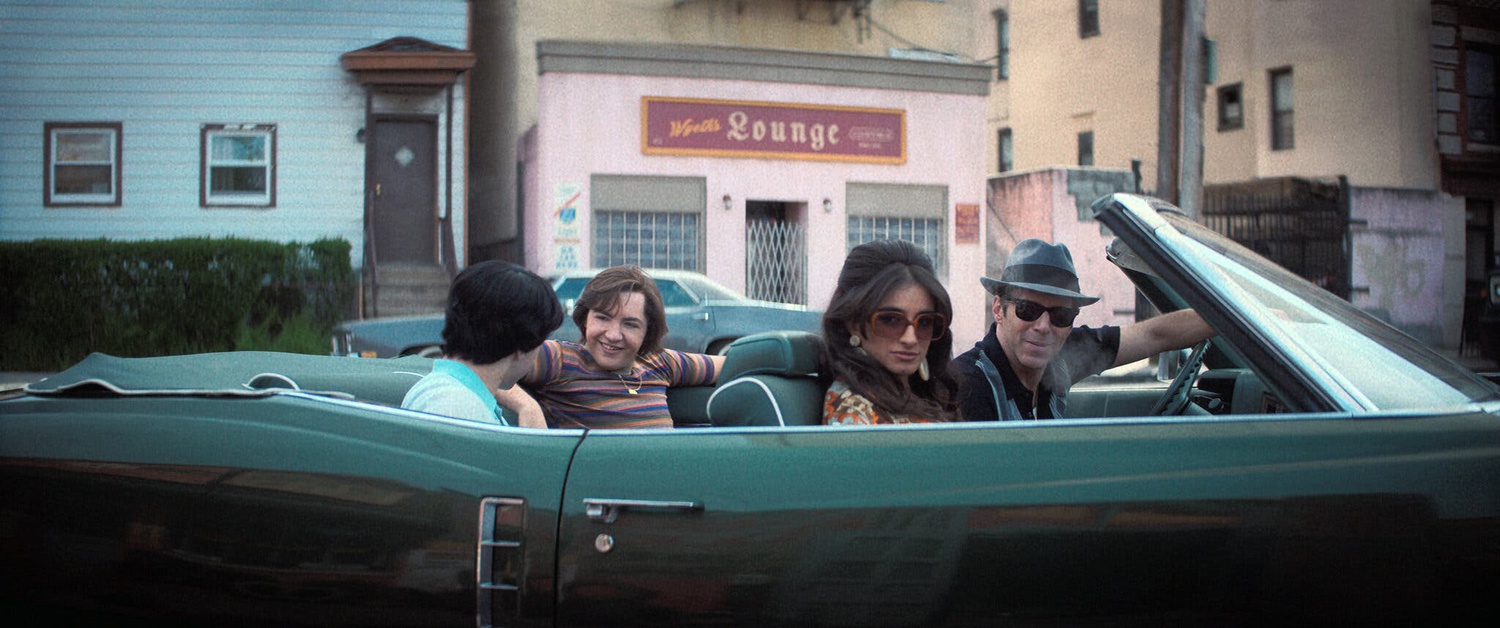
News
Summers Will Not Finish Semester of Teaching as Harvard Investigates Epstein Ties

News
Harvard College Students Report Favoring Divestment from Israel in HUA Survey

News
‘He Should Resign’: Harvard Undergrads Take Hard Line Against Summers Over Epstein Scandal

News
Harvard To Launch New Investigation Into Epstein’s Ties to Summers, Other University Affiliates

News
Harvard Students To Vote on Divestment From Israel in Inaugural HUA Election Survey
‘The Many Saints of Newark’ Review: The Many Sins of The Many Saints
Dir. Alan Taylor — 1 Star

“The Many Saints of Newark,” the long-awaited movie prequel to HBO’s award-winning series “The Sopranos,” is one of the rare pieces of media you can judge by its cover. The title, a lazy pun on protagonist Dickie Moltisanti’s last name, couldn’t be more fitting: The movie is an uninspired pastiche of a great show, a perfect example of fan-pandering gone hopelessly wrong.
The film, set in 1960s and 1970s Newark, follows the life of Dickie Moltisanti (Alessandro Nivola), an uncle figure to Tony Soprano (Michael Gandolfini, the late “Sopranos” star James Gandolfini’s son) and a member of the Soprano crime syndicate. After the police disrupt the mob’s hierarchical structure, Dicky is forced to maneuver around Newark’s racial riots, family drama, and competing crime groups, as he tries to become a better man and steer young Tony away from the mob.
“The Sopranos,” a cult classic with a plenty of backstory to explore, almost begs for a prequel. And films like “The Irishman” prove that following the early life of a mobster can make for a captivating picture. Unfortunately, “The Many Saints of Newark” director Alan Taylor is no Martin Scorsese, and the screenwriter and original showrunner David Chase’s lack of experience with the big screen becomes blatantly apparent. Such is the disappointment of the film’s main creative duo that their prequel can’t even rival the Disney+ “101 Dalmatians” prequel “Cruella,” which received mixed reviews.
As different as they may seem, what “The Irishman” and Disney's latest prequel have in common is a compelling narrative. They present stories that skillfully and logically follow the lives of their protagonists without needless detours. They know what they are and what they aim to achieve. “The Many Saints of Newark” doesn’t. It perpetually oscillates between shameless pandering to the fans, exploring Tony’s childhood, presenting Newark’s racial tensions, and following the ups and downs of Dickie Moltisanti’s life. There’s no direction, no string of careful setups and payoffs. By the time the closing credits roll in, the audience finds themselves still expecting more, because how can a film end when there was no indication of progress at any point?
The on-screen chaos is not a surprise in hindsight. On “The Sopranos,” Taylor and Chase had the luxury of a slower pace and time for narrative setups. But “The Many Saints of Newark” is not a thirteen-episode season, it’s a 120-minute movie — a fact that leads us to the film’s most jarring flaw. It's impossible to follow for a viewer unfamiliar with “The Sopranos.” The only background exposition that viewers get is a brief first-person narration at the beginning before being mercilessly thrown into the ocean of the six-season series’ lore, with a myriad of characters tangled in a complex web of connections.
Worse, the film’s fan service is tasteless. Fan-favorite characters are brought back, only to be reduced to two-dimensional caricatures propped by bigoted jokes and stereotypes that would fit an SNL New Jersey-themed skit, not the final goodbye of a beloved franchise. It would be generous to say that this act is entertaining for even the first five minutes, but even then, the concentration of cliches renders the film unbearable shortly thereafter.
There were some highlights. The performance of the two main actresses, Michela De Rossi (Giuseppina Moltisanti) and Vera Farmiga (Livia Soprano), was nothing short of inspired. They manage to stay serious throughout the cartoonishly exaggerated action of their scenes, putting up fantastically emphatic performances. Alessandro Nivola, Michael Gandolfini, and Ray Liotta are allowed more subtlety than Farmiga and De Rossi, and they more than deliver. Had their performances been backed by a serious script, they wouldn’t have felt out of place in a gangster epic like “The Godfather.” The costumes and cinematography were equally spot on, not just perfectly conveying the film’s setting, but thanks to a subdued, unsaturated color palette, also the mood. It’s a real shame no visual or production quality could possibly redeem a movie suffering such fundamental flaws.
Pulling off a prequel that manages to leave similar impressions on new audiences and die-hard fans of a franchise alike is difficult. “The Many Saints of Newark” brilliantly delivers by disappointing everyone.
—Staff writer Zachary J. Lech can be reached at zachary.lech@thecrimson.com. Follow him on Twitter @zacharylech.
Want to keep up with breaking news? Subscribe to our email newsletter.
